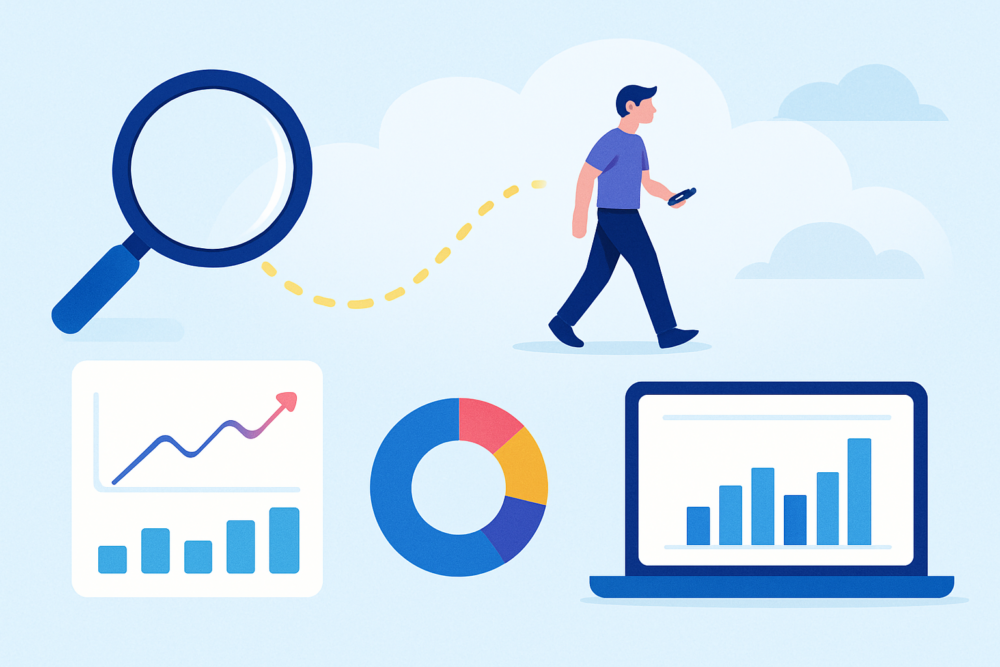Table of contents
As a current HubSpot user and veteran of a HubSpot partner agency, I know first-hand how powerful HubSpot is. And they’ve built a lot of great reporting enhancements into the platform over the last few years.
And yet – we still hear that even the best HubSpot power users run into limitations (in functionality, pricing, or both).
And so we reached out to a handful of HubSpot Reporting pros, the real “HubSpot ninjas,” and asked, “Where do you get stuck in your HubSpot reporting?”
They cooked up some great use cases and examples, and together we built some dashboards that overcome those native limitations by layering Databox on top of HubSpot.
These all got featured in a live Show & Tell, which you can watch on-demand here: HubSpot Reporting: Live Show & Tell.
Why Databox and HubSpot?
As our CEO, Pete Caputa, said recently: “HubSpot is the system of record… and Databox is the system of insight.”
Again, HubSpot’s reporting has come a long way. But when you need custom object analysis, cross-platform views, flexible funnels, or greater historical data, the native features alone often hit a wall.
That’s where Databox unlocks your HubSpot reporting superpowers:
- Custom funnel analysis and segmentation
- Integrated goal tracking and forecasting
- Calculated and time-shifted metrics
- Visual dashboards that drive conversation
- Easy sharing across teams, clients, and execs
Show & Tell: Reporting Like a HubSpot Rock Star
In our recent webinar, five seasoned revenue and operations leaders walk through the actual dashboards they use to guide strategy, performance, and coaching. These aren’t generic templates—they’re real-world examples of how teams are going beyond native HubSpot reporting with Databox.
These are real-world reporting setups you can steal – plus expert tips on tracking pipeline velocity, conversion rates, forecasting ARR, and more.
So if your HubSpot dashboards feel like pulling teeth, we’ve got you covered. Let’s dig into how the pros turn HubSpot data into decisions.

How to create a QBR report that drives real conversation
Cameron Collins, Revenue operations strategist – RevPartners
Cameron showed how he replaces clunky spreadsheets with visual dashboards that map the entire funnel – from site visits to revenue. His setup unifies data from multiple HubSpot objects using calculated metrics in Databox.
What’s hard in HubSpot: Cross-object reporting and unified visualization.
“Cross-object reports are really hard to not only create, but also to display. Even with the capabilities that you do have in your native CRM… you’re going to have to create four or five or six reports in order to create the number of sessions, the number of leads, the number of MQLs, the amount of closed-won deals… All of these reports that have to be created individually do tell the same story, but now you have four or five, six reports that have to be looked at.”
Instead of executives piecing together reports on MQLs, deals, and revenue in isolation, Cameron’s dashboards surface storylines: bottlenecks, dips in deal size, conversion rate red flags. These help leaders ask sharper questions, align quickly, and course-correct in real time.
How to build a time-shifted funnel that reflects reality
Alex Lee, Senior director of business analytics – Intellect
Since B2B sales cycles rarely close in 30 days, Alex built Databoards that reflect more realistic timelines. He explained how Intellect restructured reporting using time-shifted logic: showing lead gen from 90 days ago, deals from 60 days ago, and closes today.
What’s hard in HubSpot: Time-shifted reporting across different funnel stages.
“One thing HubSpot can’t do is actually take the different date ranges for specific stages within this sort of funnel report… where you can define, in this example, new leads came in 90 days ago, deals that were created within the last 60, 65 days… and closed-won deals within this month.”
This approach exposed true pipeline velocity and lead source effectiveness – insights HubSpot alone struggles to deliver. With Databox’s Custom metric flexibility, Alex turned this into an ongoing performance indicator, not just a backward-looking report.
Mastering webinar attribution across Zoom and HubSpot
Ali Schwanke, Founder & CEO – Simple Strat
Ali tackled one of the messiest reporting challenges in marketing: webinar attribution. With multiple events and inconsistent Zoom-to-HubSpot syncs, keeping data clean is tough.
What’s hard in HubSpot: Webinar attribution and tracking behavior across multiple events (especially Zoom integrations)
“You only ever get their last registered Zoom webinar… So if you actually then create additional fields… that’s also driven by list behavior. Again, we don’t have to get in the mechanics here, but… there’s a lot of moving parts when you’re trying to report on this webinar behavior.”
She built a system combining HubSpot lists, channel UTMs, and webinar-specific survey data – all visualized in Databox. This let her identify not only who registered and attended, but which webinar converted them, and where they came from – vital for proving ROI on content and channel spend.
How to turn forecasting into a sales coaching tool
Tory Ferrall, Director of revenue operations – Databox
Tory tackled an issue familiar to many ops leaders: forecasting that’s more intuition than insight. At Databox, she improved accuracy by analyzing when deals actually entered each HubSpot stage and calculating historical win rates per stage.
What’s hard in HubSpot: Forecasting accuracy based on assumed probabilities without historical validation; lack of stage-level win rate insights without calculated metrics.
“We actually found that HubSpot had released a new property… the date that deals enter a specific deal stage… but we hadn’t changed [win probabilities] in a while… it was kind of just a gut feeling… So we decided we can and we should look deeper into this data.”
The result? Dashboards that don’t just predict revenue – they reveal where reps are strong or stuck. Managers can spot if someone excels in early stages but stalls in negotiation, and tailor coaching accordingly.
Why most dashboards fail – and how to fix yours
Crispy Barnett, Head of revenue – Supered
Crispy got straight to the point: dashboards fail when they don’t answer business-critical questions. His method?
“Most dashboards and reports suck, honestly. Not because the data is wrong… but because they’re not built to answer real questions… And the problem is when you start with answers and not with questions, you result with nothing.”

He also leaned into HubSpot attribution models to surface what’s actually working – first, last, linear. By filtering noise and focusing on signal, his dashboards support fast, confident decision-making. Crispy suggests that attribution models (first, last, linear) require filtering and contextual layering to be useful.
“The real rockstar reporting starts with a specific question set… The goal is not to track everything. It’s to track what matters and act on it.”













